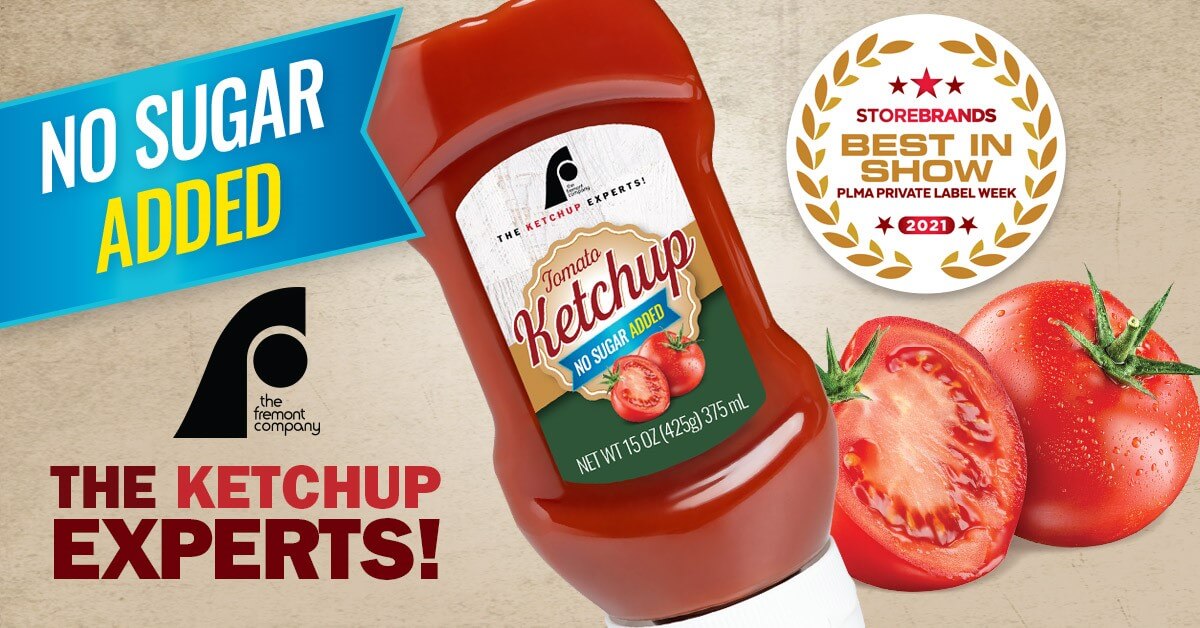Store Brands
December 2014
See the article in Store Brands Magazine
 With its start in the 1800s, tomato-based ketchup has had a long and varied history. And it remains one of the most popular condiments in American kitchens. To remain relevant among consumers, however, it has had to evolve — and has to continue to evolve in the future.
With its start in the 1800s, tomato-based ketchup has had a long and varied history. And it remains one of the most popular condiments in American kitchens. To remain relevant among consumers, however, it has had to evolve — and has to continue to evolve in the future.
Trends with traction
Americans’ love for spicy food is showing no signs of decline, says Mike Hackbarth, vice president, private label, The Fremont Co., Fremont, Ohio. Consumers continually seek out new fiery flavors wherever they may be, including in the condiment aisle. Some ketchup brands have begun to tap into this trend by offering spicy ketchups. Heinz, for example, offers consumers a Hot & Spicy Tomato Ketchup that is blended with Tabasco brand pepper sauce, as well as a Jalapeño Tomato Ketchup blended with real jalapeño. Retailers might want to follow suit or consider adding habanero, cayenne, sriracha and/or chipotle flavors to store brand ketchups.
And organics continue to be popular among consumers, especially in private label ketchup, Hackbarth states. In fact, the No. 1 selling organic ketchup brand is a store brand product and accounts for 64 percent of all organic ketchups sold. Offering a store brand organic ketchup can be a great way to reinforce the consumer’s perception of the retailer as a company that offers high-quality products at affordable prices, he says.
Trends on the horizon
Clean ingredient lists and low-/no-/reducedsodium varietals of ketchup are trends that could become even more popular in the coming year. Driving these trends are consumers who are concerned with their health and feel that condiments have too many additives and preservatives and too much salt, states global market researcher Mintel in its September “Category Insight: Table Sauces and Seasonings” report. Low-/reduced-/no-added-sugar varietals of ketchup could also become more popular, Hackbarth states. Consumers are monitoring their sugar intake from condiments such as ketchup. To attract these consumers, Fremont offers a ketchup sweetened with stevia that reduces both sugar and calories by 25 percent.
Flavor blurring also is of growing interest to consumers. Mintel’s research indicates that as many as 79 percent of millennials enjoy trying new and different flavors. Some companies are already trying to take advantage of this trend. For example, Target Corp., Minneapolis, offers a store brand ketchup made with habanero peppers and mango, as well as one made with bourbon and molasses. Stellarton, Nova Scotia-based Sobeys Inc., meanwhile, offers a store brand ketchup made with roasted red bell and chipotle peppers, as well as lime juice. And Heinz offers a ketchup made with a balsamic vinegar instead of the traditional white vinegar it uses in its other ketchups. — M. Escobar


